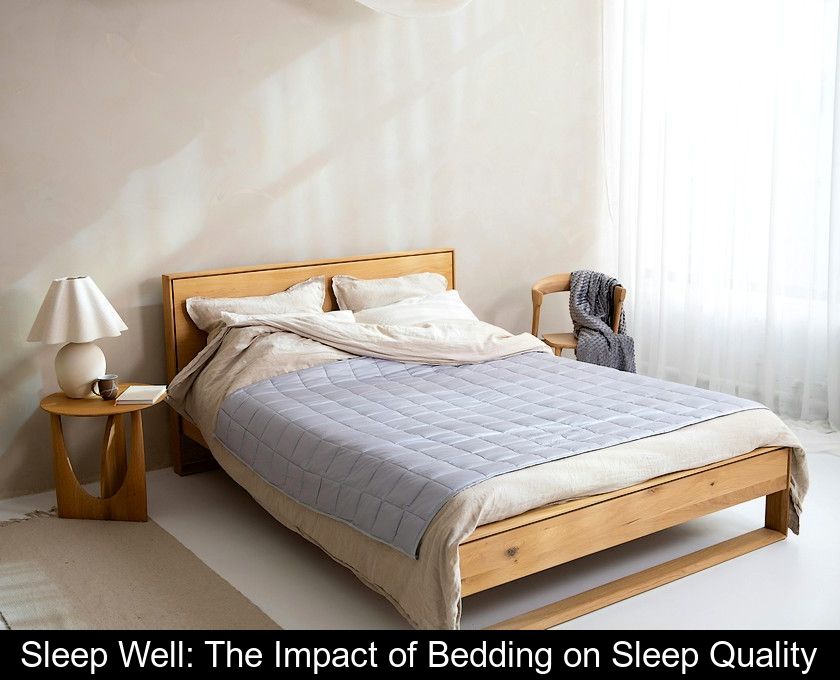Sleep Well: The Impact Of Bedding On Sleep Quality
We spend a third of our lives sleeping, which highlights the importance of choosing the right bedding! If you're experiencing back pain, muscle tension, and disrupted sleep, it might be time to change your mattress or pillow. We will explain the impact of bedding on sleep quality and offer some practical tips for upgrading your equipment and getting a good night's sleep.
How often should you change your bedding?
To sleep well, it is recommended to change your bedding every 8 to 10 years on average, for comfort, hygiene, and health reasons.
A sleeper changes positions about 40 times a night. That's why, after ten years, the mattress's suspensions will have been used approximately 150,000 times! This is also why it is advised to renew your box spring at the same time as your mattress. The box spring improves the comfort and lifespan of the mattress by absorbing a third of the sleeper's weight. It promotes the aeration and hygiene of the bedding.
Another solution to increase the lifespan of a mattress is to protect it with a mattress topper, an accessory that can be purchased online at https://hypnia.fr/collections/surmatelas
How to know when to change your mattress?
To determine if a mattress needs replacing, you should examine its exterior appearance. If the mattress retains the shape of your body or shows signs of sagging, it's time for a new one.
The quality of your sleep is also a signal to pay attention to. If your nights are not restful, your mattress does not provide good support, and you wake up with back pain, don’t wait to take action!
The mattress plays a crucial role in how quickly you fall asleep, the quality of your sleep, and even the sleeper's stress level. Bedding is vitally important for good sleep because it allows proper body alignment, reduces pressure points, and promotes muscle relaxation.
Studies have shown that new bedding results in 3 times less muscle activity during sleep and twice as few micro-awakenings throughout the night. In other words, new bedding doesn't change the nature of sleep but impacts its continuity and therefore its quality. On a new mattress, you may not necessarily sleep longer, but the nights are more restful and rejuvenating.
What is the impact of an old mattress on sleep?
When the mattress no longer provides proper support and cushioning for your body, it can lead to various muscular and joint pains, as well as backaches such as stiff necks and lower back pain.
A mattress that is several years old also contains more dust mites and germs, which thrive on the sweat and dead skin cells of sleepers. Old bedding can exacerbate dust mite allergies and their symptoms (stuffy nose, tearing) that prevent good sleep.
How to improve your sleep at a low cost?
People who do not have the budget to replace their mattress and bed base can opt for a mattress topper, which is three times less expensive. This equipment, placed directly on the mattress, provides an additional level of comfort to the sleeper by reducing pressure points. It also has the advantage of further protecting the mattress against wear and tear and extending its lifespan.
The best mattress toppers use memory foam technology to offer firmer support and alleviate back pain. The thickness of the product is also important as the thicker the mattress topper, the more support and comfort it provides.
If you tend to get hot during the night, choose a breathable model that promotes air circulation and regulates body temperature. However, no matter which model you choose, a mattress topper will help you sleep well by improving the comfort of your bedding.
Finally, be aware that your pillow can have a significant impact on the quality of your sleep. A suitable pillow helps prevent neck and shoulder pain by evenly distributing the weight of your head. Like the mattress, the pillow should ensure proper spinal alignment, adequate support, and good comfort throughout the night.
In practice:
- If you sleep on your back, choose a medium-firm pillow that keeps your head and neck aligned with your spine.
- If you sleep on your side, choose a thicker pillow to fill the space between your head and your shoulder.
- If you sleep on your stomach, opt for a flatter pillow to avoid arching your neck too much.
- If you have allergies, choose a hypoallergenic pillow to reduce the risk of allergic reactions.











